
It is officially not recommended to reuse canning lids. No company would invest in testing a one-time product to ensure it can be safely reused, as that would not be profitable. However, this does not mean that canning lids cannot be reused safely; it just means that we assume the risk ourselves. If you choose to reuse canning lids, here are some tips to do so safely, but remember that it is at your own risk.
Why reuse canning lids
One compelling reason to reuse canning lids is cost. With a current price of $3.75 for a dozen Bernardin canning lids and the potential to can hundreds of jars each year, the expenses can add up quickly. Reducing that cost by half is already quite attractive.
Another important reason is waste. It’s wasteful to send perfectly good lids to the landfill after just one use. While there are ideas for reusing canning lids as labels and for other purposes, none of those options seems appealing to me. The best way to reuse canning lids is for canning.
Lastly, the convenience of having fewer items to shop for is also very attractive. This way, I can buy new lids once a season and reuse them repeatedly.
How to keep a canning lid intact
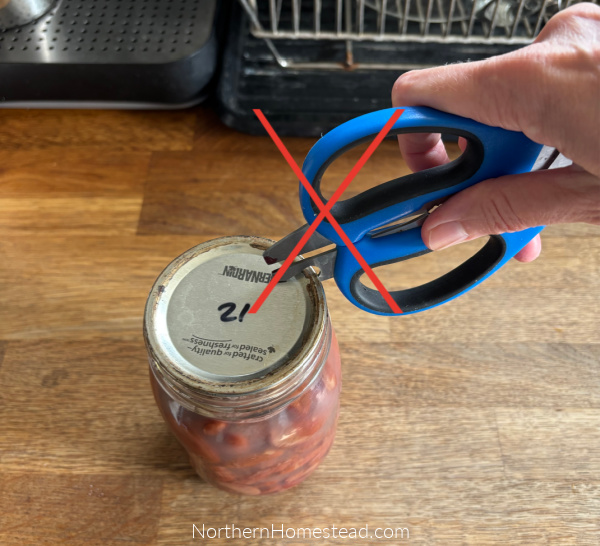
Reusing canning lids for canning begins with how you open a jar. It’s important to lift the lids off the jar without causing any dents. A lid opener tool can be very helpful for this, but if you don’t have one, there are techniques you can use. Here’s a short video we made to demonstrate how to open a lid without damaging it.
Cleaning the used lids
After removing the lids from the jar, they need to be cleaned. The best tool for this is a dish brush, which helps to remove any leftover food from the lid. Once the lids are clean, let them dry thoroughly. After they are dry, you can collect them and store them for future use.
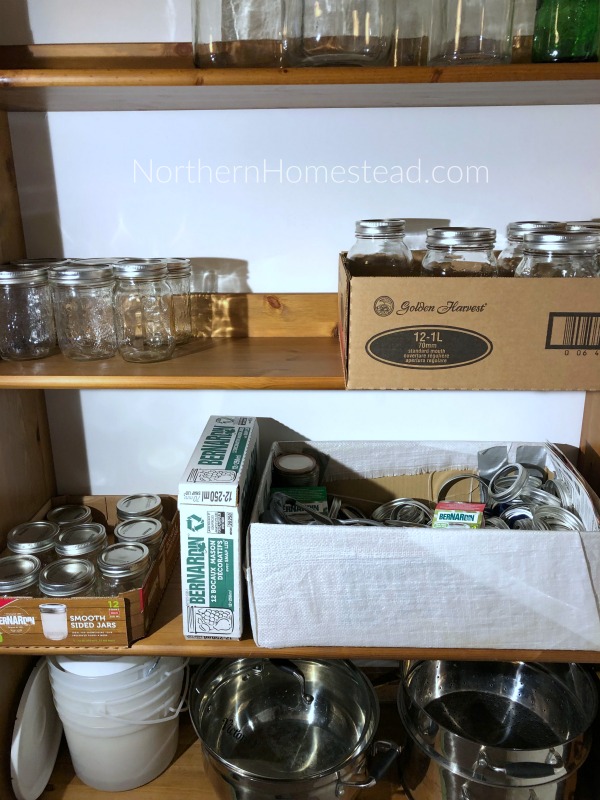
We also store the canning jars clean, covered with a lid, and ready to be used. Sometimes the lids are dusty after storage and need a quick wash. You only want to use clean lids.
Inspect the lid before reusing
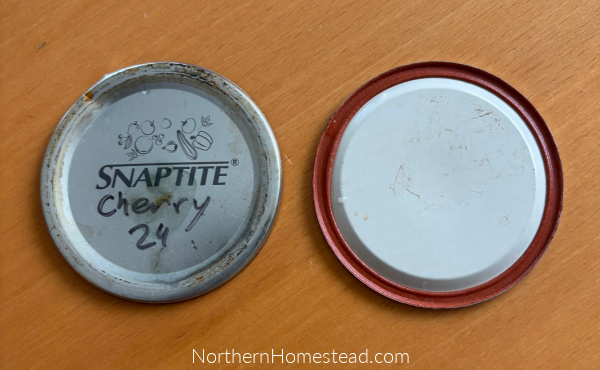
Before reusing a lid, take some time to carefully inspect it. Discard any lid that has a broken seal, is uneven, or has visible rust. You should only reuse lids that are perfectly intact. A slight impression from a previous seal is acceptable, as the lid will likely align in the same position again.
For what canning to use a reused lid
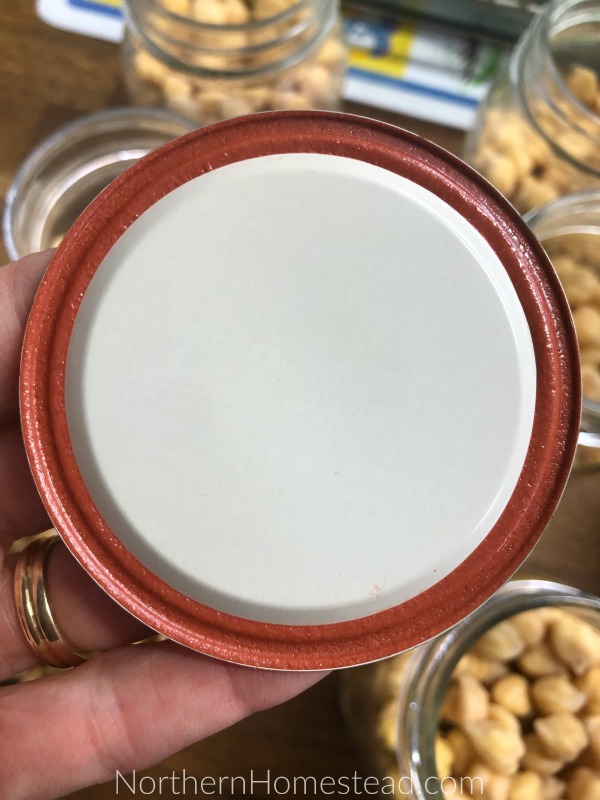
Although I usually get a good seal with both new and used lids, I still prefer to use new lids for anything that benefits from time on the shelf. For example, pickles tend to taste better after they’ve been stored for a while. On the other hand, jam is often just as tasty, if not better, the day after canning. If a pickle jar doesn’t seal properly, it’s disappointing, but if a jam jar doesn’t seal, we simply use it right away.
High-pressure canning is especially suitable for reused lids, as the high pressure ensures a tight seal. So, why not take advantage of a reused lid? You can read more about this in my blog article on canning dry beans.
How to reuse canning lids
After completing all the previous steps, I cover the reused canning lids with boiling water for about 10 minutes before using them to cover the jars. The hot water softens the ring, helping it create a good seal.
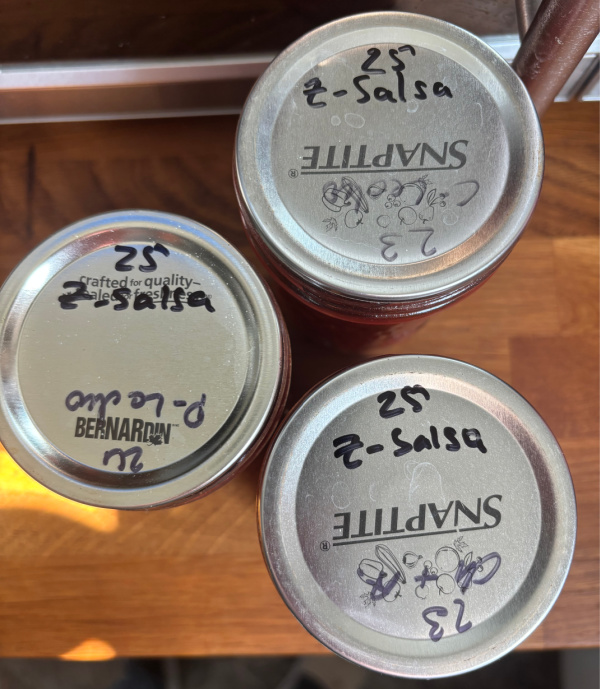
After the canning process is done and the jars have sealed, I like to label the lids with a permanent marker; it is simple and serves two purposes. I know what is in the jar, and I also know when and how often the lid has been used.
There are more great canning tips in our blog article: Our simplified approach to canning.
We invite you to subscribe to Northern Homestead and follow us on Instagram, Facebook, or Pinterest for the latest updates.

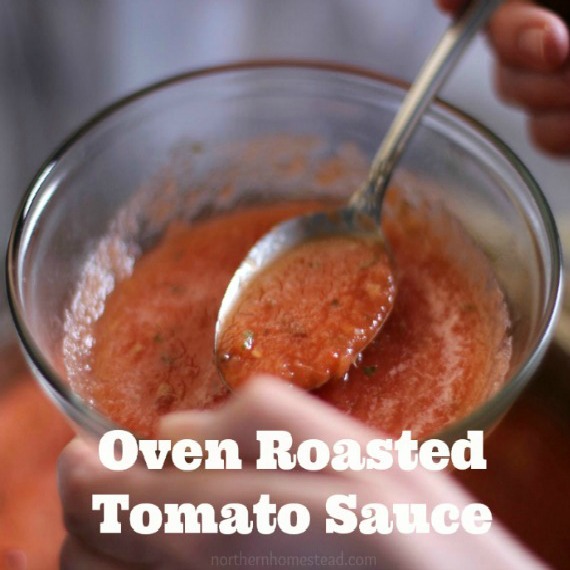
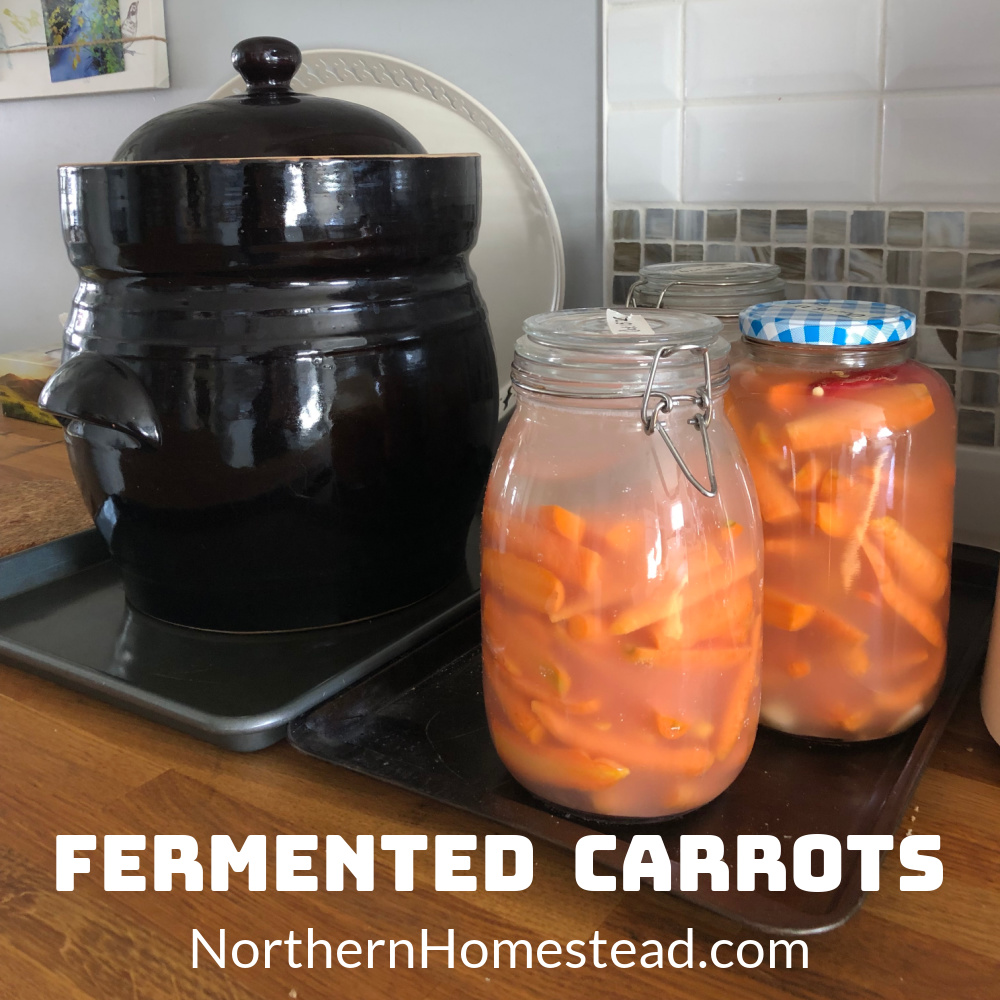
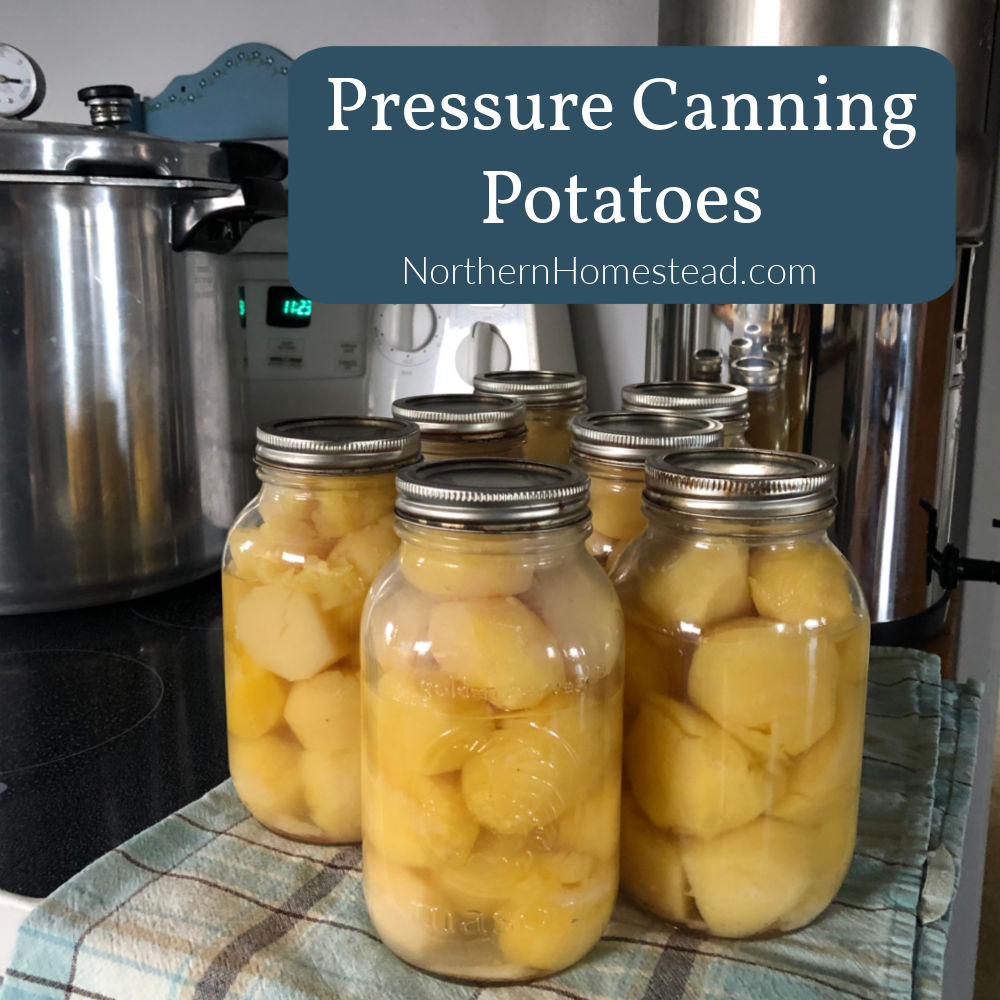
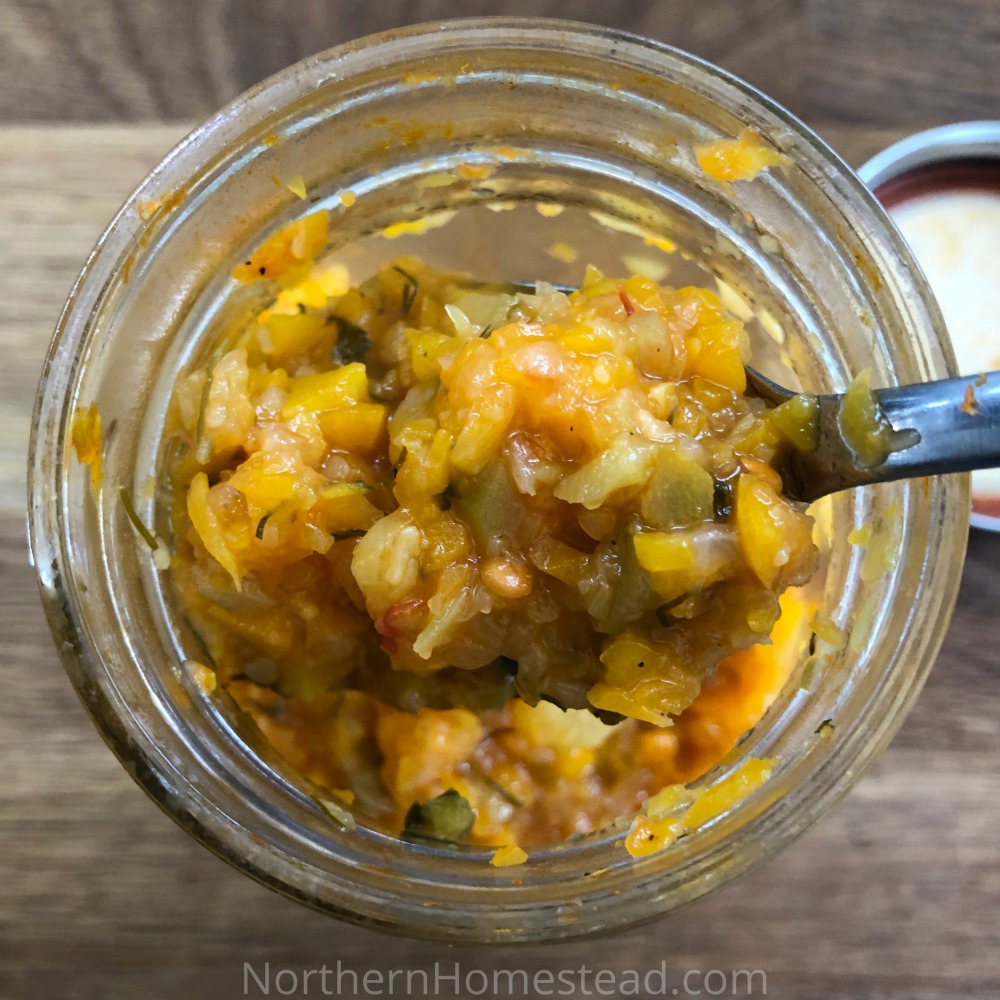
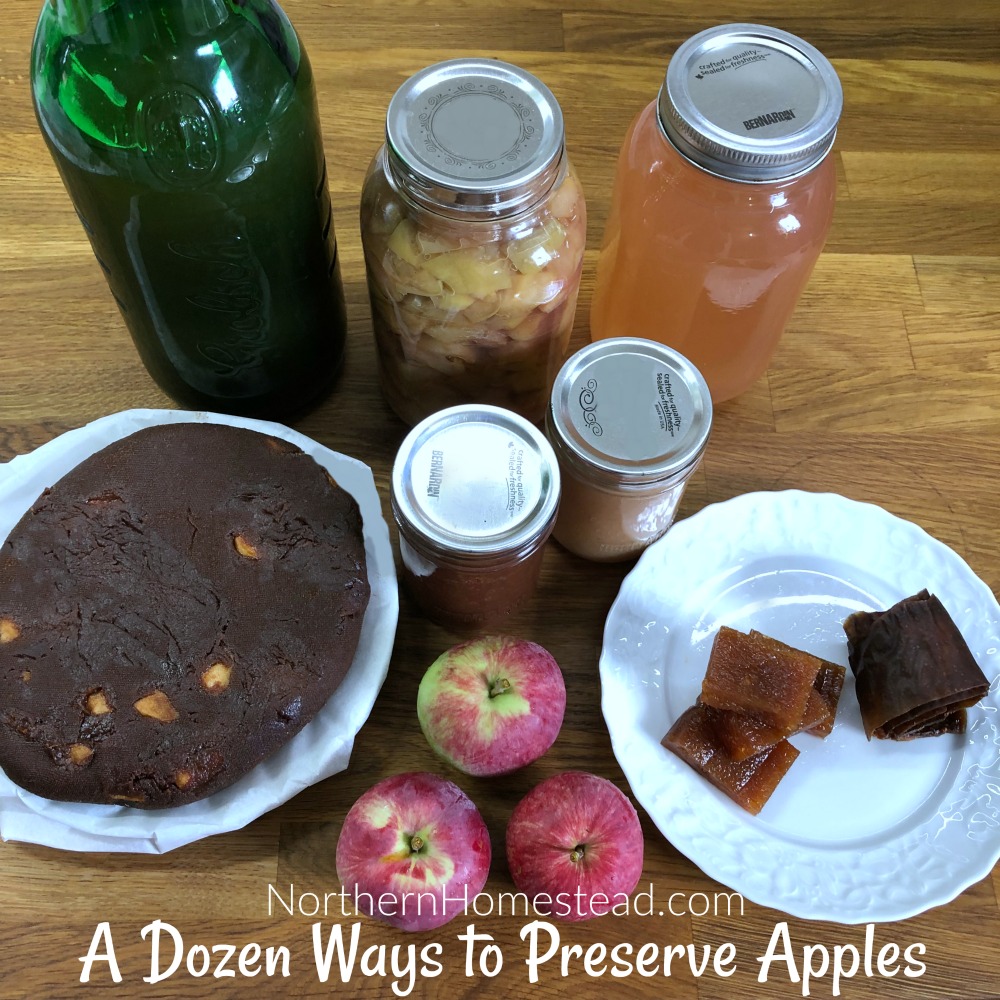
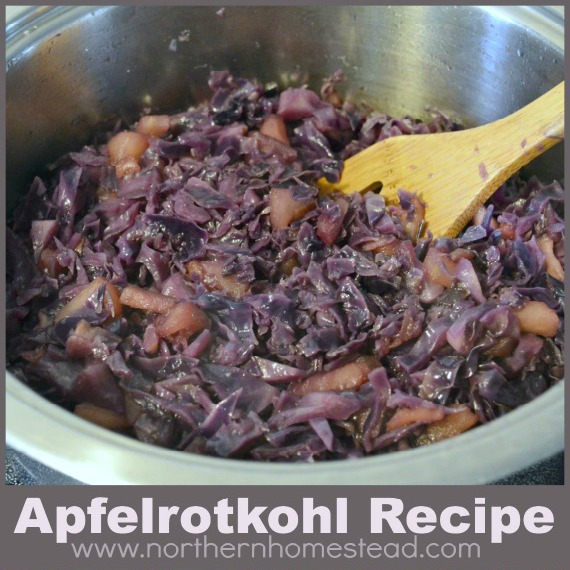

Anna, I always appreciate your willingness to share what works for you, including topics like this that many folks won’t “officially” discuss. Thank you!!! I live in an area with many Amish families. They have told me that after cleaning the lids, they soak them with about a teaspoon of baking soda to refresh the lids and help remove any previous food odors. They also said they never re-use lids from products containing meat. I’ve found that a swipe with a dab of rubbing alcohol on a napkin, etc. will remove most marker-based writing on lids, including Sharpie brand. I have more seal fails on jars topped with re-used lids, so like you advise, I choose the product I use them on carefully. Keep these great columns coming!
That’s great advice from the Amish. Thank you for sharing and your kind words.
It is irresponsible to teach bad canning practices. What you do in your kitchen is one thing. Used canning lids should only be used for storing dry products. There are products that are sold (Tattler) that can be used more than once.
Well Barbara you are right in saying that Anna takes no responsibility for what people choose to do in their own kitchen. At least she is willing to share some of her personal tips and how she comes to conclusion on whether to reuse her lids. When sharing guidelines to avoid harm or udesired outcomes, that is giving helpful instruction. A person should not be shamed for being open to sharing experience and helpful ideas with the intent to be helpful. The sharing of ideas is just what it is — sharing ideas. That’s how everyone learns and grows. To put it in another perspective, when a person makes a bad choice and the result is considered unwanted (such as planning and executing a bank robbery that results in hurt) do people rise up and call it “Irresponsible” for the news reporter to share this event and circumstances about it? Maybe it is indeed “irresponsible” of the news media to report on bad activities, When did you last write a letter objecting the reporting of harmful behavior?? Share the good news and hold silent on the bad.
Not sure what happened but it’s working now!
New comments from new followers need to be approved by an admin. So if you don’t see your comment right away, it might be that it has not been approved yet.
I’ve been following you for several years now but it seems that this “world of technology” doesn’t care for me, but that’s okay I can see me going “off-line” in the future and just staying immersed in my books, garden & kitchen and picking up my paint brushes again.
About your canning lid topic, after the fiasco that hit in 2021 I couldn’t find a tin canning lid anywhere. I had been investing in the Tattler Lids and started using them but had discovered they were not good for pressure canning so I had water bath canning covered for a bit with Tattlers reserving my tin lids for heavy duty canning and I put-up 14 turkey’s and about 20 chickens that winter. I had heard that you could “reuse” canning lids if properly removed and I learned that by placing a butter knife over the lid top and using a can opener pressing the opener on the knife to off-set the pressure from the lid…It’s works fabulous. I do reuse my canning lids but save them for only water bath processing of jam & juice that only require about 15 minutes of boiling. So far not one has not sealed. I felt very vulnerable and unprepared for what had happened in 2021 and know that “if” this happens again on a longer time-frame, we could all be in for a world of hurt. I save every re-useable lid. As soon as I found lids again I bought a case of each regular & large. My grandparents reused jars & lids from store bought pickles, olives, cherries and many other type jars. It was being done a long time ago! We use to make a day out of going to the local dump and digging them out. We fill our boxes and took them to Grandma and she would check the jars & lids and keep the best ones. The real special one’s fit canning rims & lids on them! We smelled to high-heaven and then they would take us to the local dairy farm to swim in their cement pond and we would have a picnic lunch…still smelling just a bit “off”. Cheers!
I use my used lids in dry canning (pump + O2 absorber) and for “left over” product. meaning, if I am canni g jam amd only have a small bit left,I will have a used lid soaking as well and will dig it out to use it. if it won’t seal, no loss, goes in the frirge to use right away, if it does seal. I still use it first, no waste of a lid.
That’s a good way to reuse lids. You have to do what you feel comfortable with.
I’m glad you shared this, Anna. I live surrounded by Amish, and they re-use lids. They told they, follow 2 rules: 1-Never re-use lids from products containing meats. 2-To freshen lids, soak in warm water with a tsp or two of baking soda. I’ve re-used lids following these guidelines with success, although I have some seal failures on items with re-used lids. I just practice what you share, re-using lids with care and intention on specific products, including jams and fruit juices, as Sheri mentioned. Thank you for sharing your processes with us! I look forward to reading the latest info. Blessings!
Thank you for sharing those proven tips from those that have decades of experience, and thank you for your kind words.
I am happy to see that there are others like me reusing lids. I also reuse jelly jars that I have purchased from the grocery store.To put my jams and jellies in. i read that in other countries they do not have the convenience of the lids and rings like we do here in America. so for that reason , they do reuse any jars that have good seals on them so that they can can their own.
You are right, many people around the world reuse jars and lids. I started my canning adventure in Germany with reused jars and lids. It is important that you know what a good seal looks like. The American system with lids and rings is fail-proof, because once you remove the ring, the lid would just come off without a seal. Not so with other lids. You have to know if it is sealed before storage. The lid should not move when you press on it.